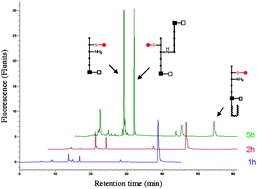Darren Braddick
Welcome
Welcome to my website.
Background
I began university life by studying Biochemistry (BSc with intercalated year). Between the second and third years, I had the opportunity to work at approximately graduate level in a pharmaceutical company, and so I took 14 months away from studies to get industrial placement experience. My work was with GE Healthcare. Following this, I came back for my final year of undergraduate study, and through a variety of circumstances, ended up with an offer of a place at the systems biology centre.
Systems Biology MSc
I have been asked a huge number of times about master's degrees - specifically if they are rewarding or difficult. In terms of the systems biology MSc, I would say it was both. Hard work, quite stressful at times, but ultimately worth doing. It was a hard but worthwhile year, and during the course of it I had the opportunity to learn about a whole new side of science, and eventually apply new skills in two, twelve week miniprojects.
The first miniproject regarded the mathematical modelling of infectious disease. In brief, the project was entirely 'dry' (well, with the exception of the time I spilt coke all over my laptop) and the work supported research into how the properties of dynamic networks may affect the properties of disease epidemiology.
The second miniproject involved examining E. coli TAT proofreading by using the Synechocystis Rieske iron-sulphur protein PetC2. In slightly more simple terms, I studied the interaction of heterologous wild-type and mutant iron-sulphur proteins with the TAT pathway quality control system. This was a lab-based project.
PhD
My PhD is entitled: 'Enzymology of the penicillin binding proteins (PBPs)'. I focus primarily on the human pathogen Streptococcus pneumoniae and its complement PBPs, specifically those which are found in forms of this bacteria resistant to mankind's most important drugs, the penicllins/beta-lactams. In my first and second year my work was primarily in vitro, looking at overexpressing and purification of the full-length membrane bound PBPs. On top of this, preparation of various forms of its in vivo substrate, called Lipid II were performed. Both enzyme and substrate are membrane bound and are challenging to work with. Despite this, one form of an assay between this compound and the PBPs of another organism (Escherichia coli) have been designed and subsequently published . Currently as I approach the end of my second year I am simultaneously wishing for much more time and beginning work on new, novel in vivo assays.
. Currently as I approach the end of my second year I am simultaneously wishing for much more time and beginning work on new, novel in vivo assays.

